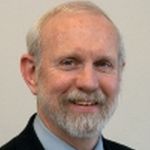Peter H. McMurry

Peter H. McMurry
Competition: US & Canada
University of Minnesota, Minneapolis
My research interests include theoretical and experimental studies of aerosol systems and aerosol instrumentation. My current work focuses on atmospheric aerosols and synthesis of novel materials formed from deposited nanoparticles produced in thermal plasma reactors.
Atmospheric aerosol research includes instrumentation development, atmospheric observations, and studies of atmospheric aerosol processing. A recent highlight of the work of myself and my colleagues is the the discovery that large numbers of new particles are produced photochemically on about 20 percent of days in many locations. We are currently developing new experimental techniques to study chemical and physical mechanisms of particle nucleation and growth and are carrying out field compaigns at both urban and background continental sites. We have also developed real-time techniques to measure particle properties, including refractive index, hygroscopicity, volatility, density, and shape.
Our invention of aerodynamic lenses is another highlight. These devices enable particles to be concentrated into tightly collimated beams. Aerodynamic lenses are used to efficiently deliver particles into particle mass spectrometers where they can be analyzed chemically, or to substrates where they can accumulate to form nanophase deposits.
Peter H. McMurry is the Kenneth T. Whitby Professor of Mechanical Engineering at the University of Minnesota. In addition to his Guggenheim Fellowship, he has been a Japan Society for the Promotion of Science Fellow at the University of Hiroshima and a Fulbright Fellow at the University of Kuopio, Finland. In 1998, he was elected a Fellow of the American Association for the Advancement of Science. He has been honored with the David Sinclair Award of the American Association for Aerosol Research and was cowinner of the Fuchs Memorial Award of the International Aerosol Research Assembly in 2006.